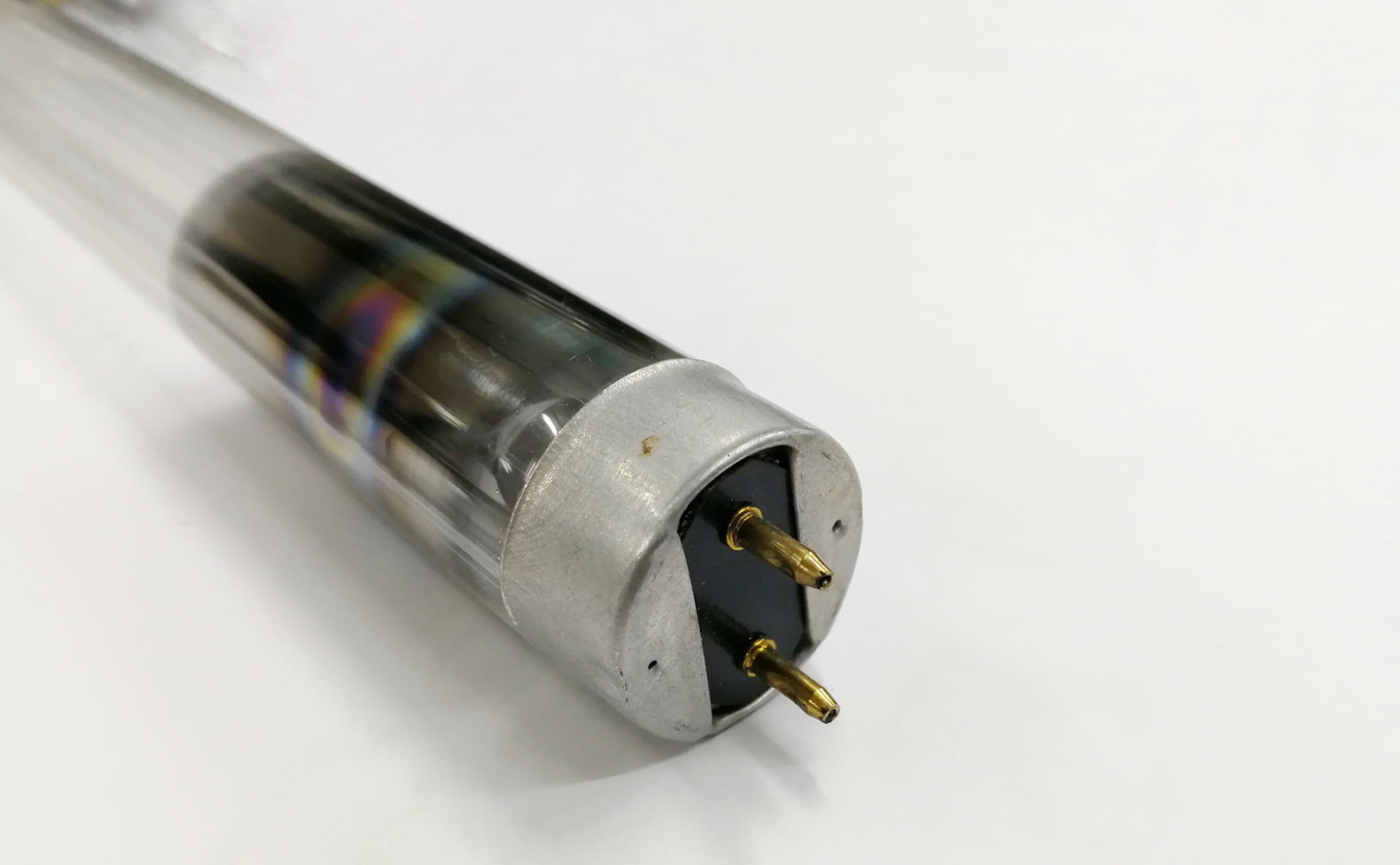How to Check the UV Lamp Is Working in Your RO System
Written by: Gene Fitzgerald // Last Updated: Jan 20, 2023
This page may contain affiliate links. If you buy a product or service through such a link we earn a commission at no extra cost to you. Learn more.
UV lamps are sometimes integrated into RO systems to support water purification.
But, if the UV lamp isn’t working, you’ll miss out on the upsides of having one in your reverse osmosis system.
In this article, we’ll discuss how you can check if the UV lamp is working in your RO system. We’ll also give you some additional tips to maintain said lamp.
Key Takeaways
To check if your reverse osmosis system’s UV lamp is working, you can:
- Check if the UV lamp is on (if it’s on, it’s working).
- Check if the UV bulb is bad.
- Check for leaks.
- Test your RO water for microorganisms.
How to Check the UV Lamp Is Working in Your RO System
There are different ways to check if your UV lamp is still working in your RO system.
For example, you can check if the bulb looks bad. You can also check for leaks or test your water. We discuss these and other methods in detail below:
How to Check If Your RO UV Lamp Is On
First, you’ll need to remove your UV lamp’s end-plug (remember to follow the manufacturer’s instructions here). The end-plug is usually a plastic cap (or something similar) that lets you examine the bulb chamber.
If you see a blue light when you take out the end-plug, your UV lamp is on and working. However, if you don’t see the light, something is wrong with your lamp.
Here’s what you can do to rectify it:
- Ensure your UV lamp is plugged in and receiving power.
- Double-check for any damages to the wiring.
- Check out the connector plug supplying the UV lamp and ensure it’s secure.
- Ensure that the ballast (if there is one) is supplying power to the UV bulb. If it isn’t, you’ll need to replace it.
- Change the ballast if you’ve recently installed a new bulb and its alarm is still going off.
How to Check for a Bad UV Light Bulb
Your UV purifier might sound an alarm when the UV light bulb isn’t functioning normally (so listen for the sound). If there’s a ballast, it should have a warning light you can look out for. If the light is orange or red instead of green, your bulb has a problem.
If you hear the ballast alarm, follow the manufacturer’s instructions for replacing the UV bulb.
Caution: Don’t look at the UV light when replacing the bulb.
How to Check for Leaks
If your UV lamp is leaking, then it means there could also be water entering inside the quartz glass sleeve. During your maintenance rounds for your UV system, check the quartz sleeve to see if there’s any water in it. If there is indeed water in it, the next step would be to locate the leak and stop it.
Test Your RO Water
UV lamps in RO systems are there to destroy microorganisms in the water. If they stop working, you risk consuming contaminated water.
The best way to know if your UV lamp is still working is to test your RO water. There are different ways of testing. You could use a DIY test kit, but we recommend going to a professional lab. This is because a DIY test kit may be unable to detect certain germs.
If the test detects microorganisms in your water, your UV lamp isn’t working, and you need to replace the bulb or fix another issue.
Additional Tips on How to Maintain the UV Lamp in Your Reverse Osmosis Filter System
Here are some additional tips and pointers you can use to help you maintain the UV lamp in your reverse osmosis filter system:
Replace UV Lamp Annually
Your UV bulb needs to be replaced annually, and here’s why:
After a while, UV bulbs run out of mercury which is a key component in ensuring the bulb works. As the mercury diminishes, UV intensity is cut down, stopping it from killing all the microorganisms in your water.
It typically takes about a year for mercury to run out, so you’ll have to replace your lamp every year.
Clean Quartz Sleeve Annually
The quartz sleeve may get clouded with minerals and debris over time. When this happens, the UV light cannot penetrate the glass.
Generally, you must clean the quartz sleeve once a year. Here’s how to do it:
- Put on your gloves (this will prevent your skin oils from damaging the sleeve).
- Closely follow the manufacturer’s instructions on how to remove the sleeve.
- Clean the sleeve with a cloth soaked in non-abrasive vinegar.
- Rinse the sleeve with water.
Note: Sometimes, you may need to clean the quartz sleeve more often than once a year. For instance, if you use hard water, your quartz sleeve will be more exposed to minerals which will cause it to cloud faster. So, the best thing to do is check your sleeve every few months to see if it requires cleaning.
Replace Quartz Sleeve Every Other Year
No matter how much you clean your quartz sleeve, you can only use it for a while. As a general rule of thumb, you’d need to replace your quartz sleeve every two years.
If you have any questions about how to check the UV lamp in your RO system is working please don’t hesitate to leave a comment below!
Information provided on BOS is for educational purposes only. The products and services we review may not be right for your individual circumstances.
We adhere to strict editorial guidelines. Rest assured, the opinions expressed have not been provided, reviewed, or otherwise endorsed by our partners – they are unbiased, independent, and the author’s alone. Our licensed experts fact-check all content for accuracy. It is accurate as of the date posted and to the best of our knowledge.


